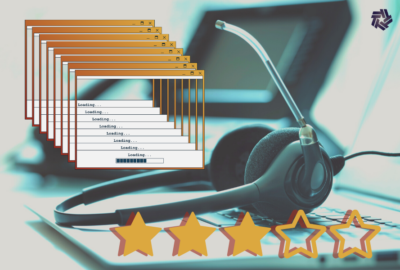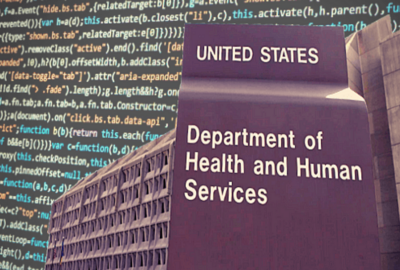Labor overcoming budget stagnation to modernize IT
Dawn Leaf, Labor's deputy chief information officer, said the agency is moving to a centralized infrastructure and hopes to give its bureaus a platform on which...
wfedstaff | April 17, 2015 7:36 pm
Labor Dept. Deputy CIO Dawn Leaf joins us for a free online chat, Tuesday, Aug. 26, at 1 p.m., to discuss her priorities around data center consolidation, cybersecurity and more. Register now.
The Labor Department’s technology budget is stuck in 2010.
But that’s not stopping DoL from figuring out how to modernize its technology infrastructure. 
“Labor actually, according to OMB’s figures, has one of the lowest IT budgets as compared to overall department budgets among the 24 or so federal agencies that OMB evaluated as part of their benchmark program,” she said. “What that means to us is a couple of things. We are about 50 percent below the median spending for these federal agencies, so we have a backlog. DoL has been unable historically to secure the funding for IT investment that would have been optimal. But it does position us really well in two ways. One, for every dollar we spend on IT, because we are so low on the diminishing returns, we get a tremendous bang for the buck. We saw that with our cloud email deployment. It also means that we have a lot of opportunity to change. IT can be a game changer for DoL because our people do what they can with the tools they have, but there is tremendous potential to use IT to improve how our staff and all of our agencies are able to perform.”
Leaf, who came to Labor about 18 months ago, said the agency’s stagnant budget is helping it move to a more centralized model from one that traditionally has been federated.
14,000 internal customers moved to centralized infrastructure
DoL created an enterprise roadmap in 2012 and has moved about 14,000 of the 17,000 internal customers to a centralized infrastructure.
“There are a lot of moving parts to that because you are changing the organization, you are changing the technology and you are doing that at the same time you are identifying and applying new technology,” Leaf said. “And of course, each agency historically in the federated model has been at a different place in terms of where they were in implementing capabilities in addition to potentially having different products and services. So just making sure that is working optimally as the foundation for everything else we do is a big deal.”
In 2011, Labor had as many as nine different infrastructures supporting 20 bureaus.
Leaf said the goal is to complete the consolidation by 2016.
“We are really seeing improvements in our capability and our ability to respond and support,” she said. “I don’t think DoL would have accomplished the enterprise migration from nine legacy email systems to a single commercial federal community cloud service provider in 2013 and 2014 if we hadn’t laid all that groundwork. I don’t’ think we would have been able to migrate our human resources system to a Treasury shared service, our acquisition system to an externally hosted commercial cloud provider if we had not improved our overall organization capabilities to execute that.”
Labor also is in the process of moving its financial system from a commercial provider to a federal shared service provider.
Leaf said the project still is in a sensitive procurement planning stage and she couldn’t offer any further details.
The centralized network also will be the starting point for several other related projects that are on tap or in process at Labor.
Leaf said her office is working on a network and security infrastructure overhaul.
“As you move to outsourced services, whether a cloud model or not, you have to rely more and more on a well performing network and security infrastructure. We completed some assessments and we are doing some redesign and improvements there,” she said.
One of Labor’s highest priorities is a new Digital Government Integrated Platform, which is a set of services that each one of the bureaus needs to expand mobile computing and open data capabilities.
“The idea is to integrate and provide those services once. The types of services would be data modeling, metadata modeling, data warehouse repository, digital asset management for audio, video and images, mobile device management, mobile computing platforms — all of those things, we realized in 2015 budget planning, we can actually save 50 percent of the proposed agency individual IT initiatives if we build the platform once and integrate it once,” Leaf said. “By building, it may be outsourced. I’m not implying DoL would build it internally. Then the agencies would develop their mission apps on top of that. That’s really a game changer. That’s where we would give new capabilities to the DoL staff that they don’t have now.”
She said the integrated platform is dependent, for the most part, on Congress approving its 2015 budget request. Labor requested $4.8 million for this program as part of its $30.5 million request for the broader IT modernization effort.
DoL would spend $4.9 million on continued support of existing systems, and $20.8 million on further data center and infrastructure consolidation efforts.
Labor updates IT governance structure
Along with the technology changes, Leaf said she’s updating DoL’s IT governance structure.
Leaf said she set up a program review board process over the last 18 months to strengthen the software development lifecycle methodology with both a technical and financial review.
Labor also is adding an independent verification and validation function.
“That’s something we learned from those projects in 2012 and 2013. Regardless of whether it’s a federal shared service or commercial service, migrating and/or acquiring and implementing IT services is not like buying a chair,” she said. “There’s still a tremendous amount of program management effort, transition planning, communication planning that has to be done within the department. So having an IV&V function for a major effort like that is well worth the target — and I’d argue it’s a 10 percent target that we identify as part of the overall project planning upfront. We had a few hiccups we could have avoided with IV&V.”
Labor also has created an enterprise implementation committee, an IT acquisition review board and IT spend planning to help make centralized technology investment decisions.
“The enterprise implementation committee really functions more often as a strategic sounding board. For example, when we did the planning for the Digital Government Integrated Platform, that was the forum we used to have a technical briefing and business and technical discussion about it with all the agencies,” Leaf said. “It’s really as the name implies is to help from an agency and business perspective to define how DoL can best go forward in accomplishing its IT objectives.”
RELATED STORIES:
NIST’s Leaf to become Labor deputy CIO
Labor to rebalance IT workforce, modernize infrastructure
Copyright © 2024 Federal News Network. All rights reserved. This website is not intended for users located within the European Economic Area.
Jason Miller is executive editor of Federal News Network and directs news coverage on the people, policy and programs of the federal government.
Follow @jmillerWFED







